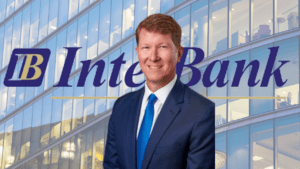It’s been up to our nation’s banks – small and large – to administer the SBA’s Paycheck Protection Plan and deliver aid to small businesses, by keeping their workforces gainfully employed during the crisis. Now, after nearly 2 months in existence, we take a look at the PPP: what are the trends and what remains unanswered?
- SBA Releases Forgiveness Application. Over this past weekend, the SBA – with consultation from the US Treasury – released a prototype Borrower Application form providing details on how to apply for forgiveness, reduce compliance burdens, and help simplify the process. The SBA will issue regulations and additional guidance on completing the form in the very near future. The form does ask borrowers to indicate if they received a loan of more than $2 million, which may earmark the application for further audit.
- What Will Forgiveness Look Like? Jeff Cardone, Partner at Luse Gorman, has been following the CARES Act since its passage and regularly advising his bank clients. He believes that, “the SBA will have a safe harbor threshold, whereby loans below a certain amount (maybe $100K or less) will automatically be forgiven.” Last week, the SBA updated their FAQs to state that borrowers under $2 million “will be deemed to have made the required certification concerning the necessity of the loan request in good faith.” This will provide businesses on the smaller side of the spectrum latitude (and make auditing easier). For larger loans +$2M, as evidenced in the recent Forgiveness application, it appears they will be held to a higher standard and will need to prove a financial need and economic uncertainty resulted in the loan being critical. The bottom line is guidance should have transpired by now, but we think bankers should spend time on larger credits in the PPP portfolio – and move on the C&I book, where we anticipate the highest credit losses in this cycle.
- Backdrop. As of last week, the Fed has grown its balance sheet to nearly $7T from $4T earlier in the year. There is presently 25% of government stimulus relative to GDP, which has increased the budget deficit to 18% this year and 10% in 21’ (from roughly 4% each year). We are clearly shaping our future in a debt laden way, and the recovery is difficult to predict – but Y/Y GDP is expected to decline 8.5% in 2Q, 4% in 3Q, and 3% in 4Q20. We think banks should be prepared for this to prove overly optimistic.
- Banks are to be Applauded. Overall, the Fed is pulling out the stops to attempt a prop up of the economy (and has clearly bolstered the broader stock market, bank stocks not included). Banks showed true entrepreneurial mettle by lifting these programs off the ground in a lightning-fast manner, learning from their mistakes, and adopting technology and operations as necessary. Perhaps more so than the effectiveness of the federal government, banks were effective in aiding small business customers better than executives could have anticipated through the PPP program.
- What Now? With significant amounts of PPP loans out to customers, how does one manage perceived (or real) risk regarding loan forgiveness and overall credit quality metrics? The biggest risk is administering loan forgiveness. Banks should remind borrowers about the proper use of funds, providing spreadsheets to keep track of the use of funds, and requiring funds to be held in a separate checking account so the flow of funds can be monitored. We think the biggest risk is administrational records on larger loans where financial need will be harder to prove, and with companies that spent poorly and laid off employees.
- Biggest Unknowns. The guidance will have to address employee layoffs in terms of the forgiveness amount. There is no help from the Treasury or SBA on this topic, and layoffs may make the loans unforgivable. Joe Lebel, the Chief Operating Officer at OceanFirst Bank N.A. ($10.5 billion in assets, based in New Jersey) told us, “We went into it with the approach that we want these loans largely to be forgiven loans. We don’t want borrowers adding debt to their balance sheet unnecessarily during this uncertain period. The allure of 1% money goes away fast when the loan is due in 2 years.”
- Is Fraud an Issue? Although the first arrests were made earlier this week when two New England businessmen were accused of PPP fraud, on the whole, there have not been many publicized issues of deception. The indemnification provisions of the SBA interim rules suggest the bank would not be liable if they are following underwriting criteria. Furthermore, banks couldn’t necessarily “police” their clients, but we heard accounts of very blunt directives that were made to borrowers. For instance, Lebel openly told his clients, “If you’re in an industry where you’ve laid off people, and you’re not going to bring your people back, don’t borrow the money because you’re not going to be able to use PPP proceeds for their intended purpose. It’s not going to be forgiven.” We feel comfortable banks will not be penalized for trying to do the right thing during a time-sensitive underwriting process.
- Are PPP Loans Being Repaid? Outside of the well-publicized loans that have been returned (LA Lakers, Shake Shack, et. al.), we have heard of very few instances of clients making repayment just yet. For the most part, customers are maintaining liquidity in an uncertain time.
- Last Thought – Capital. We have heard many times in the past month (and during earnings season) how banks are more insulated this cycle because of higher capital ratios, better underwriting, and less concentration in riskier assets. Some smaller institutions seem to be comfortable with capital given present pre-provision earning power and the supposed short-term nature of the economic cessation. While we are not investment bankers, it makes sense to discuss sub-tier debt and balance sheet strategies to protect the shareholder base from dilutive capital raises…if this recovery takes longer than expected and credit starts to exhibit more than temporary weakness.
Summary of PPP Round 2 data:
Summary, of PPP Round 2 data, as of Saturday, May 16, 2020. per the SBA’s website
Summary, of PPP Round 2 data, as of Saturday, May 16, 2020. per the SBA’s website
|
Lender Size
|
Approved Loans
|
Approved Dollars
|
|
>$50B in Assets
|
1,283,590
|
$102,521,030,018
|
|
$10B to $50B in Assets
|
383,888
|
$29,670,409,695
|
|
<$10B in Assets
|
1,096,108
|
$62,980,434,442
|
|
Total:
|
2,763,586
|
$195,171,874,154
|
|
# of Participating Lenders
|
5,479
|
Average Loan Size: $70,622
|
Travillian’s Banking and FinTech Practice provides Search and Talent Advisory (TT|Align) services to depository institutions across the country. Established in 1998, the firm has built a unique platform that touches every corner of the industry. To learn more, click here, or get in touch below!
|
Brian Love, Head of Bank Search
(484) 680-6950 | blove@traviilaingroup.com |












